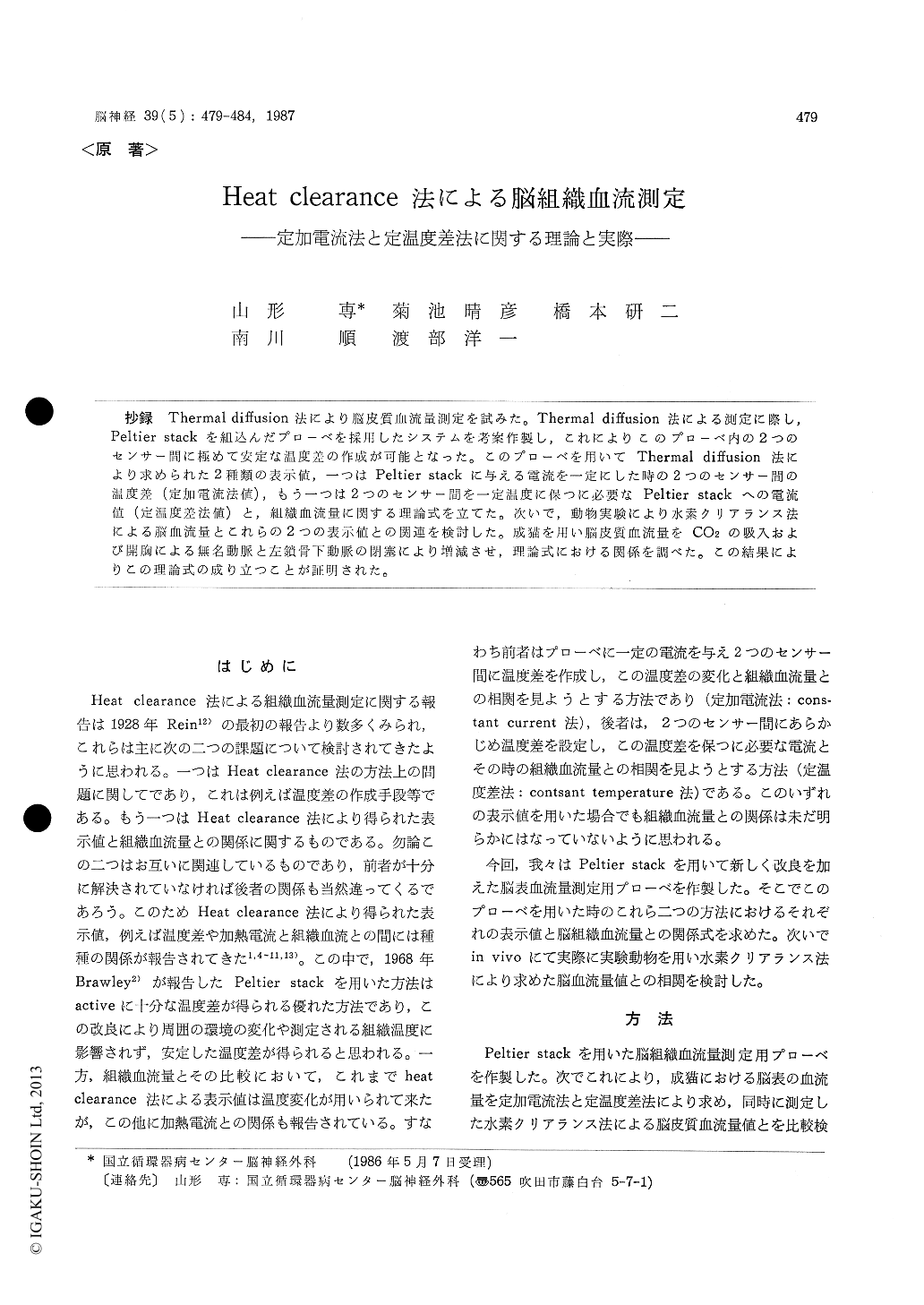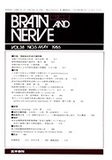Japanese
English
- 有料閲覧
- Abstract 文献概要
- 1ページ目 Look Inside
抄録 Thermal diffusion法により脳皮質血流量測定を試みた。Thermal diffusion法による測定に際し,Peltier stackを組込んだプローベを採用したシステムを考案作製し,これによりこのプローベ内の2つのセンサー間に極めて安定な温度差の作成が可能となった。このプローベを用いてThermal diffusion法により求められた2種類の表示値,一つはPeltier stackに与える電流を一定にした時の2つのセンサー間の温度差(定加電流法値),もう一つは2つのセンサー間を一定温度に保つに必要なPeltier stackへの電流値(定温度差法値)と,組織血流量に関する理論式を立てた。次いで,動物実験により水素クリアランス法による脳血流量とこれらの2つの表示値との関連を検討した。成猫を用い脳皮質血流量をCO2の吸入および開胸による無名動脈と左鎖骨下動脈の閉塞により増減させ,理論式における関係を調べた。この結果によりこの理論式の成り立つことが証明された。
In order to evaluate the blood flow by means of thermal diffusion, relationship between blood flow and parameters induced by thermal diffusion was investigated. Flow probe employed for mea-surement by thermal diffusion incorporated a Pel-tier stack which contained a small semiconductor and two L-shaped gold plates. These two plates were attached to both sides of the semiconductor by one side of each gold plate and the other side was surfaced with a tissue to be measured. Tem-perature gradient is created with current applied to the Peltier stack between two plates, one cool-ed and the other heated, and it is affected only by tissue blood flow. Two kinds of parameters ofthermal diffusion were subjected to compare to blood flow. One was temperature gradient when the constant current was applied to the Peltier stack. The other was a current required to main-tain a definite temperature gradient which was determined before hand. From the theoretical principle in thermodynamics, the correlations be-tween blood flow and each of thermal diffusion parameters were defined by the following equa- tions : F=Φv・1/ΔV+Cv, F=Φi ・I+Ci, where F is blood flow, ΔV is voltage converted from tem-perature gradient, and Ci and Cv are constants. Each of Φv and Φi indicates the characteristics of each probe.
Experimental study was carried out to confirm the above relationship using cortex of experimen-tal animals. Under the general anesthesia, a cat was placed in prone position. After the cranio-tomy, dura mater was opened and a small flow probe, 10 mm in diameter, 5 mm in height and 5 g in weight, was placed on the cortex and blood flow was continuously evaluated by two parame-ters. One was the voltage converted from tempe-rature gradient when a current of 200 mA was constantly applied to the Peltier stack. The other was the current necessary to keep the tempera-ture gradient constant, 3℃, in this study. At the same time, cortical blood flow was measured by hydrogen clearance method near the flow probe. The increase and decrease of cortical blood flow was performed by CO2 inhalation and occlusion of innominate and left subclavian arteries. Total 17 measurements of cortical blood flow were car-ried out by hydrogen clearance. Comparing to the temperature gradient, blood flow was inversely proportional to it ( F = 1.82・1/ΔV-408, r = 0.930). On the other hand, a linear relationship was obtained between blood flow and current (F= 2.54・ I-361, r = 0.927). The results of this comparative study demonstrated that the equations which were theoretically established from the principle in ther-modynamics are applicable to define the relationship between cortical blood flow and the each of two parameters of thermal diffusion when the flow probe with the Peltier stack was employed.

Copyright © 1987, Igaku-Shoin Ltd. All rights reserved.


